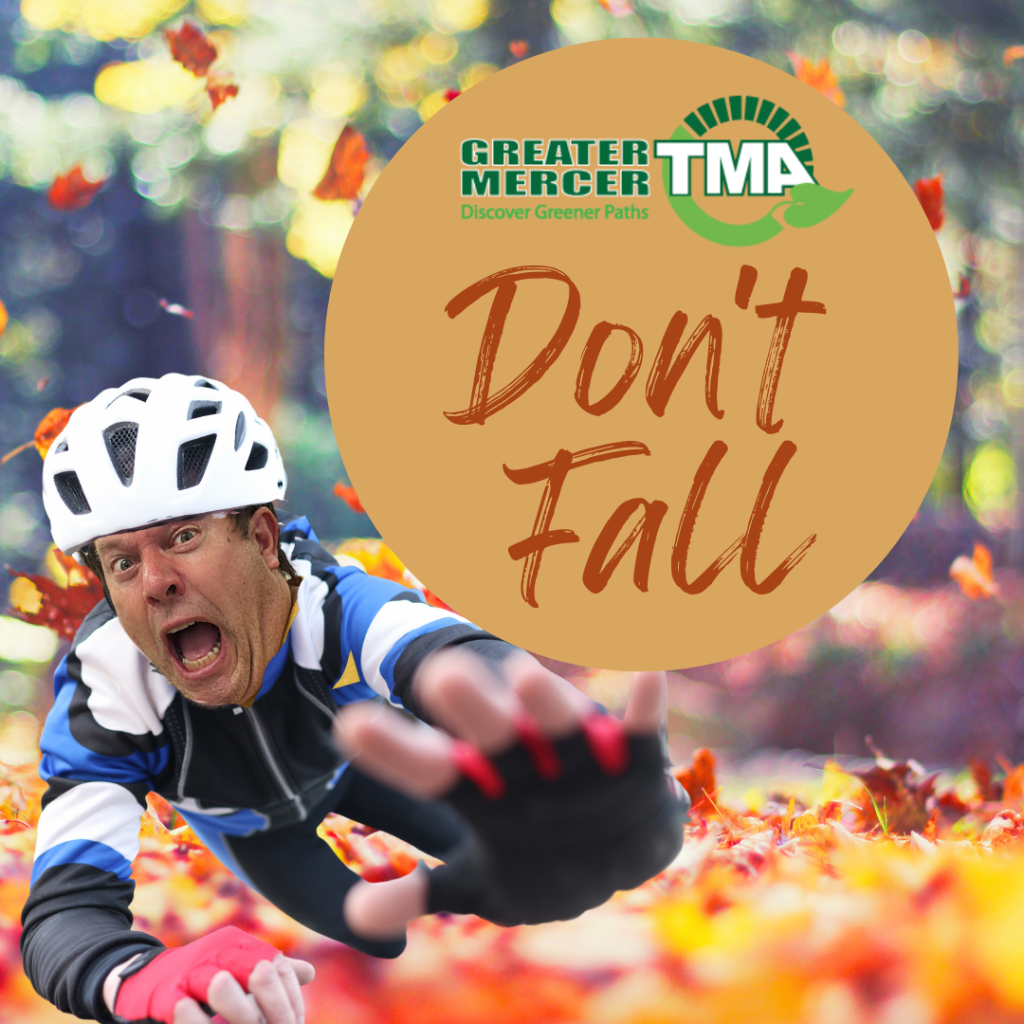
Fall has arrived, bringing with it the perfect weather for outdoor activities. The crisp and refreshing autumn air, combined with the breathtaking views of the changing leaves, makes it an ideal time to be outside. However, taking necessary precautions to ensure your safety before embarking on your Autumn journey is essential. Unfortunately, large leaf piles left on municipal streets can be a hazard for bicyclists and pedestrians. These practices can also block stormwater drains and feed unhealthy algae blooms in our waterways. A sustainable solution to this problem is a leaf corral.
Wet leaves can make roads and sidewalks slippery, so watch your step and drive cautiously. Clogged storm drains can also cause flooding, causing an increased chance of hydroplaning. Hydroplaning happens when the tires on your vehicle lose their grip on the road’s surface and instead travel on a film of water sitting on top of the road. Hydroplaning dramatically reduces a driver’s ability to steer and brake. Here is what you should do if hydroplaning occurs while you’re driving.
- Stay calm and steer into the skid. The first step in dealing with hydroplaning is to avoid panic.
- If your vehicle skids, don’t brake suddenly. Instead, grip the steering wheel firmly and steer into the skid to regain traction.
- After regaining control of your vehicle, slow down to a safe speed.
During this season, being aware of deer on the road is crucial. This time of year, deer can be unpredictable. If you see a deer, don’t panic! They tend to be out during the early morning and late evening hours, so use extra caution when driving and watch for any animals crossing the road. From September to January, its deer breeding season, which means more deer may be on the road and a higher chance of collisions with drivers. This can cause significant damage to vehicles and put occupants at risk.
 Here are some tips to help avoid a deer collision:
Here are some tips to help avoid a deer collision:
- Be aware of your surroundings. Pay attention to “deer crossing” signs. Look well down the road and far off to each side. Use your high-beam lights, if possible, to illuminate the road’s edges at night. Be exceptionally watchful in areas near woods and water. If you see one deer, there may be several others nearby.
- Be particularly alert when these animals venture out to feed at dusk and dawn.
- If you see a deer on or near the roadway and think you have time to avoid hitting it, reduce your speed, tap your brakes to warn other drivers, and sound your horn. Deer tend to fixate on headlights, so flashing them may cause the animal to move. If there’s no vehicle close behind you, brake hard.
- If you are on a multilane road, stick to the center lane. This gives the deer plenty of space and gives you time to react.
- If a collision seems inevitable, don’t swerve to avoid the deer; your risk of injury may be greater if you do. Hit it, but control the vehicle. Report the crash to the police.
Always obey the speed limit, never drive distracted, and wear safety belts. Be safe, and enjoy the new season!
Resources:
https://driving-tests.org/beginner-drivers/how-to-prevent-recover-hydroplaning/
